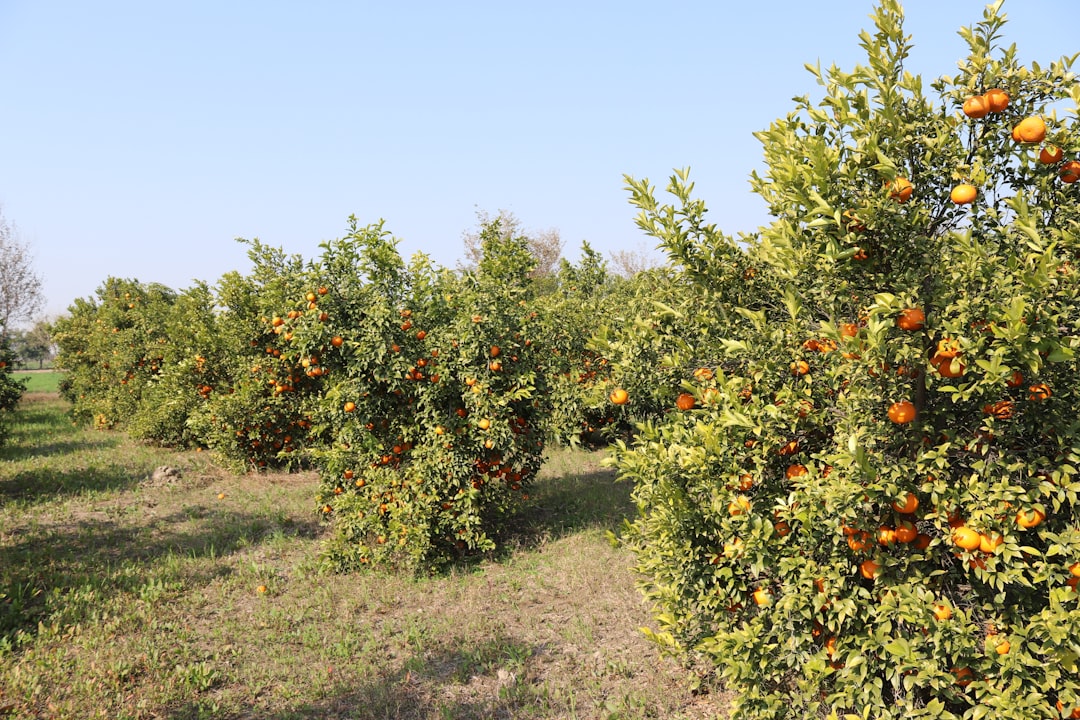Orange Tree Care: Tips for Healthy Growth

Orange trees have a rich history and have been cultivated for thousands of years. They are believed to have originated in Southeast Asia and were brought to Europe by the Moors in the 9th century. From there, they spread to the Americas during the age of exploration. Today, orange trees are grown all over the world, with major producers including Brazil, the United States, and Spain.
There are several different types of orange trees, each with its own unique characteristics. The most common type is the sweet orange (Citrus sinensis), which includes varieties such as Valencia, Navel, and Blood oranges. These oranges are typically eaten fresh or used for juice. Another type is the sour orange (Citrus aurantium), which is used primarily for its bitter peel in marmalades and liqueurs. Other varieties include mandarin oranges, tangerines, and clementines.
Key Takeaways
- Orange trees are a popular fruit tree that can be grown in many regions.
- Choosing the right location for your orange tree is important for optimal growth and fruit production.
- Preparing the soil with proper nutrients and drainage is crucial for successful orange tree planting.
- Watering and fertilizing your orange tree regularly will help it thrive and produce healthy fruit.
- Pruning your orange tree can promote optimal growth and fruit production, while protecting it from pests and diseases is important for a successful harvest.
Choosing the Right Location for Your Orange Tree
When choosing a location for your orange tree, there are several factors to consider. First and foremost, you need to ensure that the tree will receive enough sunlight. Orange trees thrive in full sun, so choose a location that gets at least six hours of direct sunlight each day.
In addition to sunlight, you also need to consider the climate and temperature of your area. Orange trees are tropical plants and prefer warm temperatures. They can tolerate some cold weather, but prolonged exposure to freezing temperatures can damage or kill the tree. If you live in a colder climate, you may need to take extra precautions to protect your orange tree during the winter months.
Preparing the Soil for Orange Tree Planting
Orange trees prefer well-draining soil that is slightly acidic with a pH between 6 and 7. If your soil is heavy clay or sandy, you may need to amend it before planting your orange tree. To improve drainage in clay soil, add organic matter such as compost or peat moss. If your soil is sandy, add organic matter to improve its water-holding capacity.
Before planting your orange tree, it’s important to prepare the soil properly. Start by removing any weeds or grass from the planting area. Dig a hole that is twice as wide and just as deep as the root ball of the tree. Mix in some compost or well-rotted manure to enrich the soil. Place the tree in the hole, making sure that the bud union (the swollen area where the tree was grafted onto the rootstock) is above ground level. Backfill the hole with soil, firming it gently around the roots.
Watering and Fertilizing Your Orange Tree
| Task | Frequency | Amount | Time of Day |
|---|---|---|---|
| Watering | Once a week | 1-2 gallons | Morning or evening |
| Fertilizing | Every 2-3 months | 1-2 cups | Early spring or late fall |
Proper watering is essential for the health and growth of your orange tree. Orange trees have shallow root systems, so they need regular watering to keep the soil moist but not waterlogged. During the first year after planting, water your orange tree deeply once a week. In subsequent years, water every 10 to 14 days during dry periods.
In addition to watering, orange trees also need regular fertilization to ensure optimal growth and fruit production. Use a balanced fertilizer with equal amounts of nitrogen, phosphorus, and potassium. Apply the fertilizer in early spring before new growth begins and again in late spring or early summer. Follow the instructions on the fertilizer package for proper application rates.
Pruning Your Orange Tree for Optimal Growth
Pruning is an important part of orange tree care and can help promote optimal growth and fruit production. Pruning helps remove dead or diseased branches, improves air circulation within the canopy, and encourages new growth.
When pruning your orange tree, start by removing any dead or damaged branches. Next, thin out any crowded or crossing branches to improve air circulation. Finally, prune back any long or leggy branches to encourage bushier growth. Avoid pruning too heavily, as this can stress the tree and reduce fruit production.
Protecting Your Orange Tree from Pests and Diseases

Orange trees are susceptible to a variety of pests and diseases, including aphids, scale insects, and citrus canker. To prevent these problems, it’s important to practice good sanitation in your garden. Remove any fallen leaves or fruit from around the tree, as these can harbor pests and diseases.
If you do notice signs of pests or diseases on your orange tree, there are several treatment options available. For minor infestations, you can try spraying the tree with a mixture of water and dish soap or using an organic insecticide. For more serious problems, consult a professional arborist or horticulturist for advice on the best course of action.
Harvesting and Storing Your Orange Crop
Knowing when to harvest your oranges is crucial for ensuring that they are at their peak flavor and quality. Oranges are typically ready to be harvested when they have reached their full color and are firm to the touch. To test for ripeness, gently squeeze the fruit – it should give slightly but not be too soft.
Once you have harvested your oranges, it’s important to store them properly to maintain their freshness. Oranges can be stored at room temperature for up to a week, but they will last longer if refrigerated. Place them in a plastic bag or container in the refrigerator crisper drawer to keep them fresh for several weeks.
Common Problems and Solutions for Orange Trees
Orange trees can face a variety of common problems, including nutrient deficiencies, root rot, and leaf drop. Nutrient deficiencies can be addressed by applying the appropriate fertilizer or soil amendments. Root rot can be prevented by ensuring proper drainage and avoiding overwatering. Leaf drop can be caused by environmental stress or pest infestations – addressing the underlying cause is key to resolving the issue.
Tips for Growing Orange Trees in Containers
Growing orange trees in containers can be a great option for those with limited space or who live in colder climates. Container-grown orange trees can be moved indoors during the winter months to protect them from freezing temperatures.
When growing orange trees in containers, choose a large pot with good drainage. Use a well-draining potting mix and water regularly, allowing the soil to dry out slightly between waterings. Fertilize regularly with a balanced fertilizer and prune as needed to maintain the size and shape of the tree.
Enjoying the Fruits of Your Labor
Growing orange trees can be a rewarding experience, and with proper care and attention, you can enjoy a bountiful harvest of delicious oranges. By choosing the right location, preparing the soil, watering and fertilizing properly, pruning for optimal growth, protecting against pests and diseases, and harvesting and storing your crop correctly, you can ensure the success of your orange tree. Whether you have a backyard orchard or a small container garden, growing orange trees is a wonderful way to enjoy the fruits of your labor.
If you’re looking for expert advice on how to care for your orange tree, look no further than Lawn World’s comprehensive guide on orange tree care. This informative article covers everything from planting and watering to pruning and pest control. Whether you’re a seasoned gardener or a beginner, this article will provide you with the knowledge and tips you need to ensure your orange tree thrives. Check out the article here to get started on cultivating a healthy and fruitful orange tree.
FAQs
What is an orange tree?
An orange tree is a citrus tree that produces oranges, a popular fruit known for its sweet and tangy taste.
Where do orange trees grow?
Orange trees grow in warm, subtropical climates such as Florida, California, and parts of the Mediterranean.
How do I care for an orange tree?
To care for an orange tree, you should provide it with plenty of sunlight, water it regularly, fertilize it, prune it, and protect it from pests and diseases.
How much sunlight does an orange tree need?
Orange trees need at least 6 hours of direct sunlight per day to thrive.
How often should I water my orange tree?
Orange trees should be watered deeply once a week, or more frequently in hot, dry weather.
What kind of fertilizer should I use for my orange tree?
Orange trees benefit from a balanced fertilizer with equal amounts of nitrogen, phosphorus, and potassium.
When should I prune my orange tree?
Orange trees should be pruned in late winter or early spring before new growth appears.
What pests and diseases should I watch out for with my orange tree?
Common pests and diseases that affect orange trees include citrus leafminer, scale insects, and citrus greening disease.



